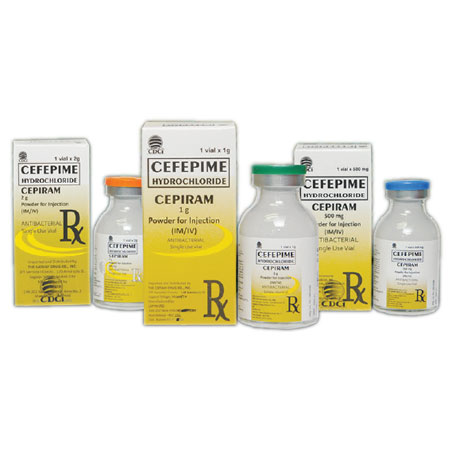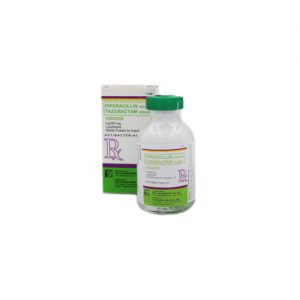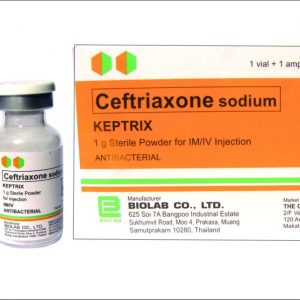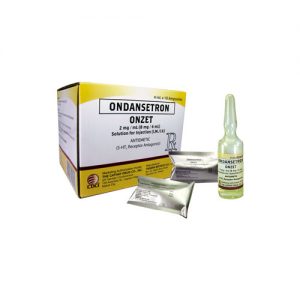Description
The Cathay Drug Co., Inc.
FORMULATION
Cepiram (Cefepime for Injection USP) is supplied for intramuscular or intravenous administration in strengths equivalent to 500 mg, 1g and 2 g of cefepime.
Each vial contains:
Cefepime Hydrochloride USP equivalent to
(Sterile mixture of Cefepime hydrochloride and L-arginine)
Each vial contains:
Cefepime Hydrochloride USP equivalent to
Cefepime ………………………………. 1 g
(Sterile mixture of Cefepime hydrochloride and L-arginine)
Each vial contains:
Cefepime Hydrochloride USP equivalent to
Cefepime ………………………………. 2 g
(Sterile mixture of Cefepime hydrochloride and L-arginine)
DESCRIPTION
Cefepime hydrochloride (Cepiram) is a semi-synthetic, broad spectrum, fourth generation cephalosporin antibiotic for parenteral administration. It has been shown to be more effective than other third-generation cephalosporins against several gram-negative isolates with better gram-positive coverage, good antipseudomonal activity and good beta-lactamase stability. In addition, the drug has been shown to inhibit various Enterbacteriaceae resistant to cefotaxime and ceftazidime.
PHARMACOLOGICAL PROPERTIES
PHARMACODYNAMICS
Cefepime hydrochloride (Cepiram) is a bactericidal agent that acts by inhibition of bacterial cell wall synthesis. Cefepime hydrochloride (Cepiram) has a broad spectrum of in vitro activity that encompasses a wide range of gram-positive and gram-negative bacteria. Cefepime hydrochloride (Cepiram) has a low affinity for chromosomally encoded beta-lactamases. It is highly resistant to hydrolysis by most beta-lactamases and exhibits rapid penetration into gram-negative bacterial cells. Within bacterial cells, the molecular targets of Cefepime are the penicillin binding proteins (PBP).
Cefepime hydrochloride (Cepiram) has shown to be active against most strains of the following microorganisms.
Aerobic Gram-Negative Microorganisms
Enterobacter
Escherichia coli
Klebsiella pneumoniae
Proteus mirabilis
Pseudomonas aeruginosa
Aerobic Gram-Positive Microorganisms
Staphylococcus aureus (methicillin-susceptible isolates only)
Streptococcus pneumoniae
Streptococcus pyogenes (Lancefield’s Group A streptococci)
Viridans group streptococci
The following in vitro data are available, but their clinical significance is unknown. Cefepime has been shown to have in vitro activity against most isolates of the following microorganisms; however, the safety and effectiveness of cefepime in treating clinical infections due to these microorganisms have not been established in adequate and well-controlled trials.
Aerobic Gram-Positive Microorganisms
Staphylococcus epidermidis (methicillin-susceptible isolates only)
Staphylococcus saprophyticus
Streptococcus agalactiae (Lancefield’s Group B streptococci)
NOTE: Most isolates of enterococci, eg, Enterococcus faecalis, and methicillin-resistant staphylococci are resistant to cefepime.
Aerobic Gram-Negative Microorganisms
Acinetobacter calcoaceticus subsp. lwoffii
Citrobacter diversus
Citrobacter freundii
Enterobacter agglomerans
Haemophilus influenzae (including beta-lactamase producing isolates)
Hafnia alvei
Klebsiella oxytoca
Moraxella catarrhalis (including beta-lactamase producing isolates)
Morganella morganii
Proteus vulgaris
Providencia rettgeri
Providencia stuartii
Serratia marcescens
NOTE: Cefepime is inactive against many isolates of Stenotrophomonas (formerly Xanthomonas maltophilia and Pseudomonas maltophilia).
Anaerobic Microorganisms
NOTE: Cefepime is inactive against most isolates of Clostridium difficile.
PHARMACOKINETICS
The average plasma concentrations of Cefepime hydrochloride (Cepiram) observed in healthy adult male volunteers at various times following single 30-minute infusions (IV) of Cefepime hydrochloride (Cepiram) 500 mg, 1g and 2 g are summarized in Table 1. Elimination of Cepiram is principally via renal excretion with an average (+SD) half-life of 2.0 (+0.3) hours and total body clearance of 120.0 (+8.0) mL/min in healthy volunteers.
Cefepime hydrochloride (Cepiram) pharmacokinetics are linear over the range of 250 mg to 2 g.
There is no evidence of accumulation. The average steady state volume of distribution of Cefepime hydrochloride (Cepiram) is 18.0 (+2.0)L. The serum protein binding of Cefepime hydrochloride (Cepiram) is approximately 20% and is independent of its concentration in serum.
Cefepime hydrochloride (Cepiram) is excreted unchanged in the urine which accounts for approximately 85% of the administered dose.
Table 1: Average Plasma Concentrations in mcg/mL of Cefepime and Derived Pharmacokinetic Parameters (±SD), Intravenous Administration
| Parameter | CEPIRAM | ||
| 500 mg IV | 1 g IV | 2 g IV | |
| 0.5 h | 38.2 | 78.7 | 163.1 |
| 1 h | 21.6 | 44.5 | 85.8 |
| 8 h | 1.4 | 2.4 | 3.9 |
| 12 h | 0.2 | 0.6 | 1.1 |
| Cmax, mcg/mL | 39.1 (3.5) | 81.7 (5.1) | 163.9 (25.3) |
| AUC,h•mcg/mL | 70.8 (6.7) | 148.5 (15.1) | 284.8 (30.6) |
Following administration of 250 mg IV peak concentration of 18 μg/mL are achieved. Following intramuscular (IM) administration, cefepime is completely absorbed. The average plasma concentrations of cefepime at various times following a single intramuscular injection are summarized in Table 2. The pharmacokinetics of cefepime are linear over the range of 500 mg to 2 g intramuscularly and do not vary with respect to treatment duration.
Table 2: Average Plasma Concentrations in mcg/mL of Cefepime and Derived Pharmacokinetic Parameters (±SD), Intramuscular Administration
| Parameter | CEPIRAM | ||
| 500 mg IM | 1 g IM | 2 g IM | |
| 0.5 h | 8.2 | 14.8 | 36.1 |
| 1 h | 12.5 | 25.9 | 49.9 |
| 2 h | 12 | 26.3 | 51.3 |
| 12 h | 0.7 | 1.4 | 2.3 |
| Cmax, mcg/mL | 13.9 (3.4) | 29.6 (4.4) | 57.5 (9.5) |
| Tmax, h | 1.4 (0.9) | 1.6 (0.4) | 1.5 (0.4) |
| AUC, h•mcg/mL | 60 (8) | 137 (11) | 262 (23) |
Distribution
The average steady-state volume of distribution of cefepime is 18 (±2) L. The serum protein binding of cefepime is approximately 20% and is independent of its concentration in serum.
Metabolism and Excretion
Cefepime is metabolized to N-methylpyrrolidine (NMP) which is rapidly converted to the N-oxide (NMP-N-oxide). Urinary recovery of unchanged cefepime accounts for approximately 85% of the administered dose. Less than 1% of the administered dose is recovered from urine as NMP, 6.8% as NMP-N-oxide, and 2.5% as an epimer of cefepime. Because renal excretion is a significant pathway of elimination, patients with renal dysfunction and patients undergoing hemodialysis require dosage adjustment.
Specific Populations
Renal impairment: The average half-life in patients requiring hemodialysis was 13.5 (±2.7) hours and in patients requiring continuous peritoneal dialysis was 19 (±2) hours. Cefepime total body clearance decreased proportionally with creatinine clearance in patients with abnormal renal function, which serves as the basis for dosage adjustment recommendations in this group of patients.
Hepatic impairment: The pharmacokinetics of cefepime were unaltered in patients with hepatic impairment.
Geriatric patients: There appeared to be a decrease in cefepime total body clearance as a function of creatinine clearance. Therefore, dosage administration of cefepime in the elderly should be adjusted as appropriate if the patient’s creatinine clearance is 60 mL/min or less.
Pediatric patients: No accumulation was seen when cefepime was given at 50 mg per kg every 12 hours (n=13), while Cmax, AUC, and t½ were increased about 15% at steady state after 50 mg per kg every 8 hours. The exposure to cefepime following a 50 mg per kg intravenous dose in a pediatric patient is comparable to that in an adult treated with a 2 g intravenous dose.
Susceptibility Tests
Dilution Techniques
Quantitative methods are used to determine antimicrobial minimum inhibitory concentrations (MICs). The MIC values should be interpreted according to the following criteria:
Table 3
| Microorganism | MIC (mcg/mL) | ||
| Susceptible (S) | Intermediate (I) | Resistant (R) | |
| Microorganisms other than Haemophilus spp.* and Streptococcus pneumoniae* | ≤ 8 | 16 | ≥ 32 |
| Haemophilus spp.* | ≤ 2 | _* | _* |
| S. pneumoniae * | ≤ 0.5 | 1 | ≥ 2 |
| *NOTE: Isolates from these species should be tested for susceptibility using specialized dilution testing methods.1 Also, isolates of Haemophilus spp. with MICs greater than 2 mcg/mL should be considered equivocal and should be further evaluated. | |||
Diffusion techniques: Reports from the laboratory providing results of the standard single-disk susceptibility test with a 30-mg Cefepime hydrochloride (Cepiram) disk should be interpreted according to the following criteria:
Table 4
| Microorganism | Zone Diameter (mm) | ||
| Susceptible (S) | Intermediate (I) | Resistant (R) | |
| Microorganisms other than Haemophilus spp.* and S. pneumoniae* | ≥ 18 | 15 to 17 | ≤ 14 |
| Haemophilus spp.* | ≥ 26 | _* | _* |
*NOTE: Isolates from these species should be tested for susceptibility using specialized diffusion testing methods. Isolates of Haemophilus spp. with zones smaller than 26 mm should be considered equivocal and should be further evaluated. Isolates of S. pneumoniae should be tested against a 1-mcg oxacillin disk; isolates with oxacillin zone sizes larger than or equal to 20 mm may be considered susceptible to cefepime.
INDICATIONS
Cefepime hydrochloride (Cepiram) is indicated in the treatment of the following infections:
- Pneumonia (moderate to severe) caused by Streptococcus pneumoniae, including cases associated with concurrent bacteremia, Pseudomonas aeruginosa, Klebsiella pneumoniae, or Enterobacter species.
- Empiric Therapy for Febrile Neutropenic Patients. Cefepime as monotherapy is indicated for empiric treatment of febrile neutropenic patients. In patients at high risk for severe infection (including patients with a history of recent bone marrow transplantation, with hypotension at presentation, with an underlying hematologic malignancy, or with severe or prolonged neutropenia), antimicrobial monotherapy may not be appropriate. Insufficient data exist to support the efficacy of cefepime monotherapy in such patients.
- Uncomplicated and Complicated Urinary Tract Infections (including pyelonephritis) caused by Escherichia coli or Klebsiella pneumoniae, when the infection is severe, or caused by Escherichia coli, Klebsiella pneumoniae, or Proteus mirabilis, when the infection is mild to moderate, including cases associated with concurrent bacteremia with these microorganisms.
- Uncomplicated Skin and Skin Structure Infections caused by Staphylococcus aureus (methicillin-susceptible strains only) or Streptococcus pyogenes.
- Complicated Intra-abdominal Infections (used in combination with metronidazole) caused by Escherichia coli, viridans group streptococci, Pseudomonas aeruginosa, Klebsiella pneumoniae, Enterobacter species, or Bacteroides fragilis.
Culture and susceptibility testing should be performed where appropriate to determine the susceptibility of the causative organism(s) to Cefepime hydrochloride (Cepiram).
DOSAGE AND ADMINISTRATION
The recommended adult and pediatric dosages and routes of administration are outlined in the following table. Cefepime hydrochloride (Cepiram) should be administered intravenously over approximately 30 minutes.
Table 5 Recommended Dosage Schedule for Cepiram
| Site and type of Injection | Dose | Frequency | Duration (days) |
| Moderate to severe pneumonia | 1 – 2 g IV | Q12h | 10 |
| Empiric therapy for febrile neutropenic patients | 2 g IV | Q8h | 7 |
| Mild to moderate uncomplicated or complicated urinary tract infection |
0.5 – 1 g IV |
Q12h |
7 – 10 |
| Severe uncomplicated or complicated urinary tract infection including pyelonephritis |
2 g IV |
Q12h |
10 |
| Moderate to severe uncomplicated skin and skin structure | 2 g IV | q12h | 10 |
| Complicated intra-abdominal infections (in combination with metronidazole) |
2 g IV |
Q12h |
7 – 10 |
Pediatric Patients (2 months up to 16 years)
The maximum dose for pediatric patients should not exceed the recommended adult dose. The usual recommended dosage in pediatric patients up to 40 kg in weight for uncomplicated and complicated urinary tract infections (including pyelonephritis), uncomplicated skin and skin structure infections, and pneumonia is 50 mg per kg per dose, administered every 12 hours (50 mg per kg per dose, every 8 hours for febrile neutropenic patients), for durations as given above.
or until resolution of neutropenia. In patients whose fever resolves but who remain neutropenic for more than 7 days, the need for continued antimicrobial therapy should be re-evaluated frequently.
Patients with Hepatic Impairment
No adjustment is necessary for patients with hepatic impairment
Use in Patients with Renal Impairment
In patients with impaired renal function (creatinine clearance less than or equal to 60 mL/min), the dose of Cefepime hydrochloride (Cepiram) should be adjusted to compensate for the slower rate of renal elimination. The recommended maintenance doses of Cefepime hydrochloride (Cepiram) in patients with renal insufficiency are presented in Table 6.
TABLE 6
Recommended Maintenance Schedule in Adult patients with Renal Impairment relative to Normal Recommended Dosing Schedule
| CrCl (mL/min) | Recommended Maintenance Schedule | |||
| > 60 Normal recommended dosing schedule | 500 mg q12h | 1 g q12h | 2 g q12h | 2 g q8h |
| 30 – 60 | 500 mg q24h | 1 g q24h | 2 g q24h | 2 g q12h |
| 11 – 29 | 500 mg q24h | 500 mg q24h | 1 g q24h | 2 g q12h |
| < 11 | 250 mg q24h | 250 mg q24h | 500 mg q24h | 1 g q24h |
When only serum creatinine is available, the following formula (Cockroft and Gault equation) may be used to estimate creatinine clearance. The serum creatinine should represent a steady state of renal function:
Males: Creatinine Clearance (mL/min) = weight (kg) x (140- age)
72 x serum creatinine (mg/dL)
Females: 0.85x above value
Administration
For Intravenous Infusion, Constitute the 500 mg, 1 g, or 2 g vial, and add an appropriate quantity of the resulting solution to an IV container with one of the compatible IV fluids. THE RESULTING SOLUTION SHOULD BE ADMINISTERED OVER APPROXIMATELY 30 MINUTES.
Intramuscular Administration: For intramuscular administration, Cefepime hydrochloride (Cepiram) should be constituted with one of the following diluents: Sterile Water for Injection, 0.9% Sodium Chloride, 5% Dextrose Injection, 0.5% or 1 % Lidocaine Hydrochloride, or Sterile Bacteriostatic Water for Injection. Preparation of Cepiram solutions is summarized in Table 7.
Table 7: Preparation of Solutions of Cefepime hydrochloride (Cepiram)
| Single-Dose Vials for Intravenous/Intramuscular Administration | Amount of Diluent to be added (mL) | Approximate Available Volume (mL) | Approximate Cefepime Concentration (mg/mL) | ||||
| Single-Dose Vials for Intravenous/Intramuscular Administration | Amount of Diluent to be added (mL) | Approximate Available Volume (mL) | Approximate Cefepime Concentration (mg/mL) | ||||
| cefepime vial content | |||||||
| 500 mg (IV) | 5 | 5.6 | 100 | ||||
| 500 mg (IM) | 1.3 | 1.8 | 280 | ||||
| 1 g (IV) | 10 | 11.3 | 100 | ||||
| 1 g (IM) | 2.4 | 3.6 | 280 | ||||
| 2 g (IV) | 10 | 12.5 | 160 | ||||
| Single-Dose Vials for Intravenous/Intramuscular Administration | Amount of Diluent to be added (mL) | Approximate Available Volume (mL) | Approximate Cefepime Concentration (mg/mL) | ||||
| cefepime vial content | |||||||
| 500 mg (IV) | 5 | 5.6 | 100 | ||||
| 500 mg (IM) | 1.3 | 1.8 | 280 | ||||
| 1 g (IV) | 10 | 11.3 | 100 | ||||
| 1 g (IM) | 2.4 | 3.6 | 280 | ||||
| 2 g (IV) | 10 | 12.5 | 160 | ||||
| ADD-Vantase | |||||||
| 1 g vial | 50 | 50 | 20 | ||||
| 1 g vial | 100 | 100 | 10 | ||||
| 2 g vial | 50 | 50 | 40 | ||||
| 2 g vial | 100 | 100 | 20 | ||||
Compatibility and Stability
Intravenous: Cepiram is compatible at concentrations between 1 mg per mL and 40 mg per mL with the following intravenous infusion fluids: 0.9% Sodium Chloride Injection, 5% and 10% Dextrose Injection, M/6 Sodium Lactate Injection, 5% Dextrose and 0.9% Sodium Chloride Injection, Lactated Ringers and 5% Dextrose Injection. These solutions may be stored up to 24 hours at controlled room temperature 20°C to 25°C (68°F to 77°F) or 7 days in a refrigerator 2°C to 8°C (36°F to 46°F).
Intramuscular: Cepiram constituted as directed is stable for 24 hours at controlled room temperature 20°C to 25°C (68°F to 77°F) or for 7 days in a refrigerator 2°C to 8°C (36°F to 46°F) with the following diluents: Sterile Water for Injection, 0.9% Sodium Chloride Injection, 5% Dextrose Injection, Sterile Bacteriostatic Water for Injection with Parabens or Benzyl Alcohol, or 0.5% or 1% Lidocaine Hydrochloride.
Appearance and color of solution: colorless to amber
CONTRAINDICATIONS
Cefepime hydrochloride (Cepiram) is contraindicated who have immediate hypersensitivity reactions to Cefepime hydrochloride (Cepiram) or the cephalosporin class of antibiotics, penicillins or other beta-lactam antibiotics.
WARNINGS
Pseudomembranous colitis
PRECAUTIONS
Impaired renal function (creatinine clearance < 60 mL/min)
Superinfection prothrombin time should be monitored
Positive direct Coomb’s tests have been reported during treatment with Cefepime Hydrochloride (Cepiram)
Caution in individuals with a history of gastrointestinal disease, particularly colitis.
Drug Interactions
Renal function should be monitored carefully if high doses of aminoglycosides are to be administered with Cefepime hydrochloride (Cepiram) because of the increased potential of nephrotoxicity and ototoxicity.
Pregnancy
Teratogenic Effects – Pregnancy Category B
No adequate and well-controlled studies of cefepime use in pregnant women. Because animal reproduction studies are not always predictive of human response, this drug should be used during pregnancy only if clearly needed.
Nursing Mothers
Cefepime is excreted in human breast milk in very low concentrations (0.5 mcg/mL). Caution should be exercised when cefepime is administered to a nursing woman.
Pediatric Use
The safety and effectiveness of cefepime have been established in the age groups 2 months up to 16 years. Safety and effectiveness in pediatric patients below the age of 2 months have not been established.
ADVERSE EFFECTS
In clinical trials using multiple doses of cefepime, 4137 patients were treated with the recommended dosages of cefepime (500 mg to 2 g intravenous every 12 hours). The adverse reactions were local reactions (3 %), including phlebitis (1.3%), pain and/or inflammation (0.6%); rash(1.1%). Less frequent were Colitis (including pseudomembranous colitis), diarrhea, fever, headache, nausea, oral moniliasis, pruritus, urticaria, vaginitis, vomiting.
As with other cephalosporins, anaphylaxis including anaphylactic shock, transient leukopenia, neutropenia, agranulocytosis and thrombocytopenia have been reported.
Cephalosporin-Class Adverse Reactions
In addition to the adverse reactions listed above that have been observed in patients treated with cefepime, the following adverse reactions and altered laboratory tests have been reported for cephalosporin-class antibiotics:
Stevens-Johnson syndrome, erythema multiforme, toxic epidermal necrolysis, renal dysfunction, toxic nephropathy, aplastic anemia, hemolytic anemia, hemorrhage, hepatic dysfunction including cholestasis, and pancytopenia.
OVERDOSAGE
Patients who receive an overdose should be carefully observed and given supportive treatment. In the presence of renal insufficiency, hemodialysis, not peritoneal dialysis, is recommended to aid in the removal of cefepime from the body. Symptoms of overdose include encephalopathy (disturbance of consciousness including confusion, hallucinations, stupor, and coma), myoclonus, seizures, and neuromuscular excitability.
STORAGE
Store at temperatures not exceeding 25°C. Protect from light.
AVAILABILITY
Vials of 500 mg, 1g and 2 g






Reviews
There are no reviews yet.